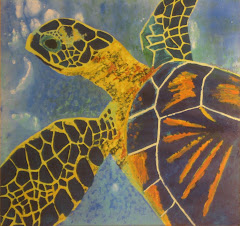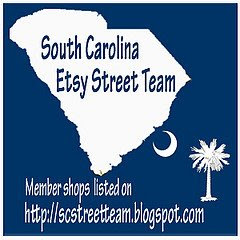I have done a lot of vending over the years, and I wanted to give some input to this topic. This is just some of my experiences with a variety of different shows, craft fairs, and festivals.
Vending for me has always been first and foremost to make money. However the reality of making tons of money by selling every item you take usually is not the reality. I have rarely (relative to the # of events I have attended, & amount of items I brought to sell) come close to selling out.
Vending can get expensive. I have paid up to $400 dollars for a booth, and have driven 13+ hours for an event. Then add the cost of hotels and food, multiplied by the number of days you are away from home, then multiply those days by the fact that you are not at home producing your products, and things can get expensive quick.
Vending is tricky. Just like the location of a storefront is everything, the location of your booth at an event is crucial. So contact the Event staff to find out if you pay for vending, where your spot will be. This will help you to determine whether or not it is worth the vendor fees. Also depending on the size of an event, vending fees may differ depending on there location within the event. High traffic areas may cost more than vendors around the perimeter are paying.
Know what you are getting into. Do some reasearch on the event so you know how many people, and other vendors will be attending. Also know the local laws about vending. Some places don't have any requirements, while other places require fees and vending licences. The best place to get all this information is from the event staff. They should know the local laws and info on attendees and volume of vendors. However they are always trying to promote their event so they may stretch the numbers to make it sound more inticing. Another good place to get info on local vending reulations is that locations chamber of commerce.
Variety is probably the key to greatest volume of sales. Also having enough of everything is very important. When preparing for a vending trip I plan on taking way more product than I expect to sell. The last thing you want is to sell out of something that is really selling well that day. Having to much of something isn't to much of a problem because you can always store your extra stuff under a table, and restock your tables as nessasary. There is a trick to selling most of the stuff you have left over after the event. I will get to that later.
When you get your booth set up at your event, be sure to take a good look around. Take along a helper or signifigant other who can stay at your booth while you go see what everybody else brought to sell. (A helper comes in very handy when business really picks up:) It is a good idea to know what the comps are in your area. By this I mean it is important to know how much the other vendors are selling their products for. This may help you gauge the best price to sell your items for. You know the value of your craft or art, and you want to get the most money possible for each item. There is a fine line you walk as a vendor. You don't want to under cut all the other vendors prices, so that you are the only one selling anything. Yet you also want to sell as much of what you brought as you possibly can. So what do you do. It is up to you to decide what is best for you. I usually start off asking high prices for my items. Potential customers are going to try to bargain with you anyway so the high price tactic makes them feel like they are getting a deal. If the high price thing isn't working because your not selling much, then drop your prices accordingly. I usally decrease my prices throughout the day ending with sale type pricing by the end of the event.
 Well I am very fortunate indeed, and there are truly some very kind individuals left in this world. A friend of mine whom I haven't seen in about 3 years has been very hospitable to me recently. After he found out that I was longing to blow glass again he offered me some space in his studio, to come and blow glass with him. This is such a wonderful opportunity for me, and I am truly grateful for the kindness this Friend has shown me. His studio is a short drive from my house, and I am able to go blow glass a few days a week for a few hours at a time. I Really LOVE to blow glass. It is so awesome to get back behind a torch and dance with the flames the torch produces. Blowing glass is truly my artistic passion. It is so nice to be able to blow glass again, and not have to worry about having to produce glass to pay the bills. This opportunity is allowing me to really enjoy glass once more.
Well I am very fortunate indeed, and there are truly some very kind individuals left in this world. A friend of mine whom I haven't seen in about 3 years has been very hospitable to me recently. After he found out that I was longing to blow glass again he offered me some space in his studio, to come and blow glass with him. This is such a wonderful opportunity for me, and I am truly grateful for the kindness this Friend has shown me. His studio is a short drive from my house, and I am able to go blow glass a few days a week for a few hours at a time. I Really LOVE to blow glass. It is so awesome to get back behind a torch and dance with the flames the torch produces. Blowing glass is truly my artistic passion. It is so nice to be able to blow glass again, and not have to worry about having to produce glass to pay the bills. This opportunity is allowing me to really enjoy glass once more. The more time I spend behind the torch the more I remember about how glass moves; as it transforms solid glass into liquid glass, and then back into a solid. Glass is such a unique artistic medium. With glass an artist can create 3D forms which are only limited by the artists imagination and skills. If a glass artist has enough skills the glass grants him or
The more time I spend behind the torch the more I remember about how glass moves; as it transforms solid glass into liquid glass, and then back into a solid. Glass is such a unique artistic medium. With glass an artist can create 3D forms which are only limited by the artists imagination and skills. If a glass artist has enough skills the glass grants him or her the ability to create anything imagined.
her the ability to create anything imagined. I have a real passion for art, and I am so ready to get back to blowing glass. I am
I have a real passion for art, and I am so ready to get back to blowing glass. I am 

 use of color is is amazing, which is something I wish to learn, and attempt to emulate.
use of color is is amazing, which is something I wish to learn, and attempt to emulate.






